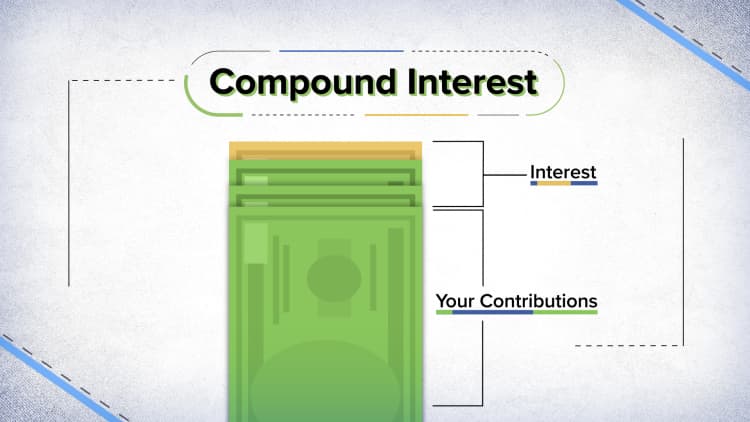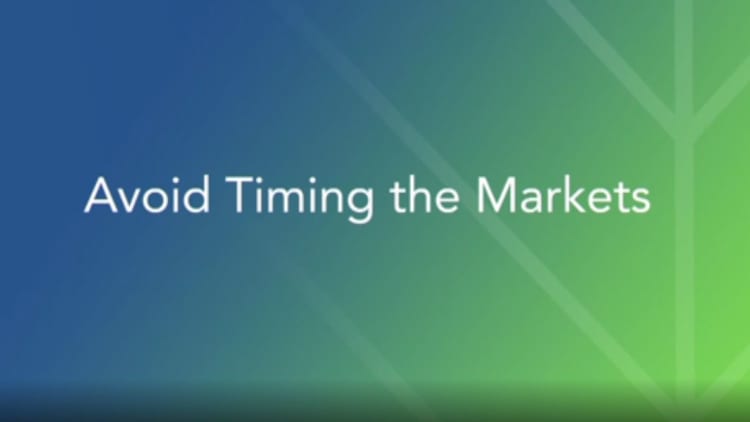It's illogical. It'll never happen. No one would accept negative interest rates. Until they did, around the world, in countries including Germany, and it's a distinct possibility U.S. citizens eventually will too.
The bond market just isn't your father's bond market anymore.
The definition of a bond has not changed. Bonds, which are IOU's from governments, municipalities, and businesses, are issued to investors in exchange for interest payments over an agreed amount of time. For example, when Uncle Sam borrows money by issuing a 10-year U.S. Treasury bond, it agrees to pay interest payments twice per year to the people who buy the bond, and on the 10-year anniversary of the issue date, the investor gets the last interest payment plus the full face value of the bond. That's 20 interest payments plus return of original face value.
The basic concept in the bond seller and buyer relationship has not changed either. When you buy a bond, you are sort of like a bank — lending money to a borrower who then pays interest.
Basic investor needs are still the same. You're right to be thinking, "I just want a safe place to put my money and collect a little interest for the next 10 years."
Getting harder to put money in a "safe" place
But now, more than ever, there are a lot of esoteric things affecting bonds that, to the individual investor, will make it seem like something only for people employed in the world of high finance.
Putting your money in a "safe place" to collect "a little interest" is a hard thing to do with the 10-year Treasury bond paying only about 1.5%. It's even harder to do if you live in Europe, where government debt is paying less, with lot paying negative interest. That means that an investor in a negative-yielding bond, like the 10-year German government bond, known as a bund, is accepting the fact that they will receive less money — a negative return — for lending money to their government. I do not think American investors are prepared for that here in the States. Alan Greenspan, former Federal Reserve Chairman, believes that negative interest rates on U.S. Treasury bonds are not a matter if, but a matter of when.
More from Invest in You:
Test your money IQ
5 things novice investors do wrong
The magic number amount of money you need to retire
Siemens of Germany just issued bonds that pay a negative interest rate — that means paying a company to hold your money instead of the company paying you to borrow your money. As strange as it seems, there is about a $1 trillion dollars of negative-yielding corporate debt sloshing around the world, and a total of $17 trillion in negative-yield bonds.
Interest rate basics
An individual investor may not want to know what drives bond prices, but I believe it's important to understand the bond market basics because anything tied to the words "interest rate" is affected by bond price swings.
In a nutshell, there are two kinds of interest rates. There is the rate that you pay, such as on credit card debt and mortgage debt, and the one that you receive, on savings account interest and interest from bond funds. Obviously you want the former to be as low as possible and the latter to be as high as possible. But those two interest rates are really just two sides of the same coin, so they will never be too far apart.

It used to be that the health of the U.S. economy determined bond prices, which move in opposite direction to their yields, or the interest rates that they pay. If the economy is strong, that would mean inflation would be on the rise, causing interest payments to have less purchasing power, which then means bonds would be valued downward to make their current interest payment more attractive to new bond buyers. And if the economy was weak, interest payments from bonds would have more purchasing power, so bond prices would be valued upward to make new bond buyers pay up for the bonds.
Ever since the end of the Great Recession, ten years ago, investors have stepped up their buying of dividend-paying stocks and corporate bonds, including junk bonds, all in the name of yield chasing. So far, they've been right to do so. But only time will tell if they remain right.
But now in a financially connected global economy, U.S. bonds have to compete for investors' cash against bonds from countries all over the world. This has been in the works for decades, but it has really taken hold a lot more as of late. For example, with German 10-year bonds paying negative interest rates, It makes a 10-year U.S. treasury's 1.5% yield look juicy to a German citizen. This is the main reason why U.S. treasury securities are paying so little interest. Foreign pension plans, endowments, and everyday citizens from other countries see U.S. government bonds not only as a safe and stable investment option, but a higher paying one at that. From a competitive standpoint, it's hard for foreigners, who are looking for income from a safe source, to pass on U.S. bonds. This foreign demand has helped cause Treasury prices to rise, which lowers the interest rate that they pay.

Lack of economic growth around the world is another big factor. As global central banks attempt to stimulate their economies with lower interest rates, it has the effect of making U.S. interest rates look relatively high, which also translates into higher bond yields stateside. This is the main reason why President Trump has been pressuring Federal Reserve Chairman Jerome Powell to cut short-term interest rates at a quicker pace; to help keep the rate low on the national debt, to spur more economic growth, and to help offset the financial drag from the trade war with China.
Meanwhile, the rest of the world, with low or no economic growth, has persistently low inflation. If inflation is low, that means bonds don't have to pay much of a premium above inflation in order to compensate investors with the buying power from interest rate payments.
Better cash rates for savers will end
Only recently have savers started to finally see an uptick in the interest they receive from savings and money market accounts, and they should now expect those rates to go down again. Savers can accept that those interest rates will go lower as the Federal Reserve is expected to cut rates as many as two more times this year, and possibly several more times next year. Or they can invest in longer-dated securities such as a 10-year treasury bond that pays only 1.5%, but will remain consistent for that investor as long as the bond is held to maturity.
For borrowers, the low interest rate environment continues to be a generous one, as you almost never hear about companies being denied access to credit. Even the bluest of blue-chip companies are taking advantage of low interest rates to issue investment grade corporate bonds, such as Apple, and Disney. With the cost of money so low, they're thinking "Why not grab as much as possible because you never know when you're going to need the reserves?"
Ever since the end of the Great Recession, ten years ago, investors have stepped up their buying of dividend-paying stocks and corporate bonds, including junk bonds, all in the name of yield chasing. So far, they've been right to do so. But only time will tell if they remain right.

Lower-rated and junk-rated corporate bonds and stocks will surely be tested the next time the U.S. economy enters a recession. My experience of 30 years as a financial advisor has taught me that's when investors will be tested — and get burned again. Remember, investors whose investment objectives are income and stability are also usually older, with fewer or no more working years ahead of them, making them the least able to afford to lose money on their investments. Then again, these are the people who need income from their passive investments to pay bills. It's like being stuck between a rock and a hard place. And with more and more baby boomers retiring every day, the eventual harm to yield chasers will be that much more.
—By Mitch Goldberg, president of investment advisory firm ClientFirst Strategy
CHECK OUT: What you can expect to happen during a typical economic recession via Grow with Acorns+CNBC.
Disclosure: NBCUniversal and Comcast Ventures are investors in Acorns.






